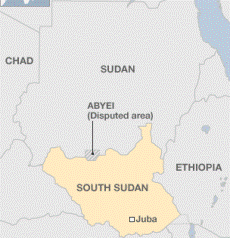South Sudan has intensified efforts to incorporate the disputed Abyei region into its territory, citing the outcome of a controversial referendum held over a decade ago. First Vice President Riek Machar recently received the referendum report, signaling a policy shift from the government’s earlier stance.
On January 4, Machar accepted the referendum findings from a delegation led by Abyei Area Chief Administrator Dr. Chol Deng Alak. The report will be presented to the executive and parliament for deliberation. This move contrasts with Juba’s 2013 rejection of the referendum’s results, where one of Abyei’s main ethnic groups overwhelmingly supported integration into South Sudan.
Background of the Abyei Dispute
Abyei is a resource-rich region located along the Sudan-South Sudan border. The conflict over its status began with the Comprehensive Peace Agreement (CPA) of 2005, which ended Sudan’s civil war and granted South Sudan independence in 2011. Abyei was designated a “special administrative status” area, with its final status to be determined through a referendum.
The planned 2011 referendum was delayed due to disagreements between the Ngok Dinka, who predominantly favor South Sudan, and the Misseriya Arab community, who lean toward Sudan. Despite a unilateral vote by the Ngok Dinka in October 2013 supporting annexation to South Sudan, Juba dismissed the results, citing the need for broader consensus.
Abyei remains a flashpoint in Sudan-South Sudan relations, with both nations maintaining claims over the territory. This latest development could heighten tensions, particularly given the historical sensitivity of the issue.


